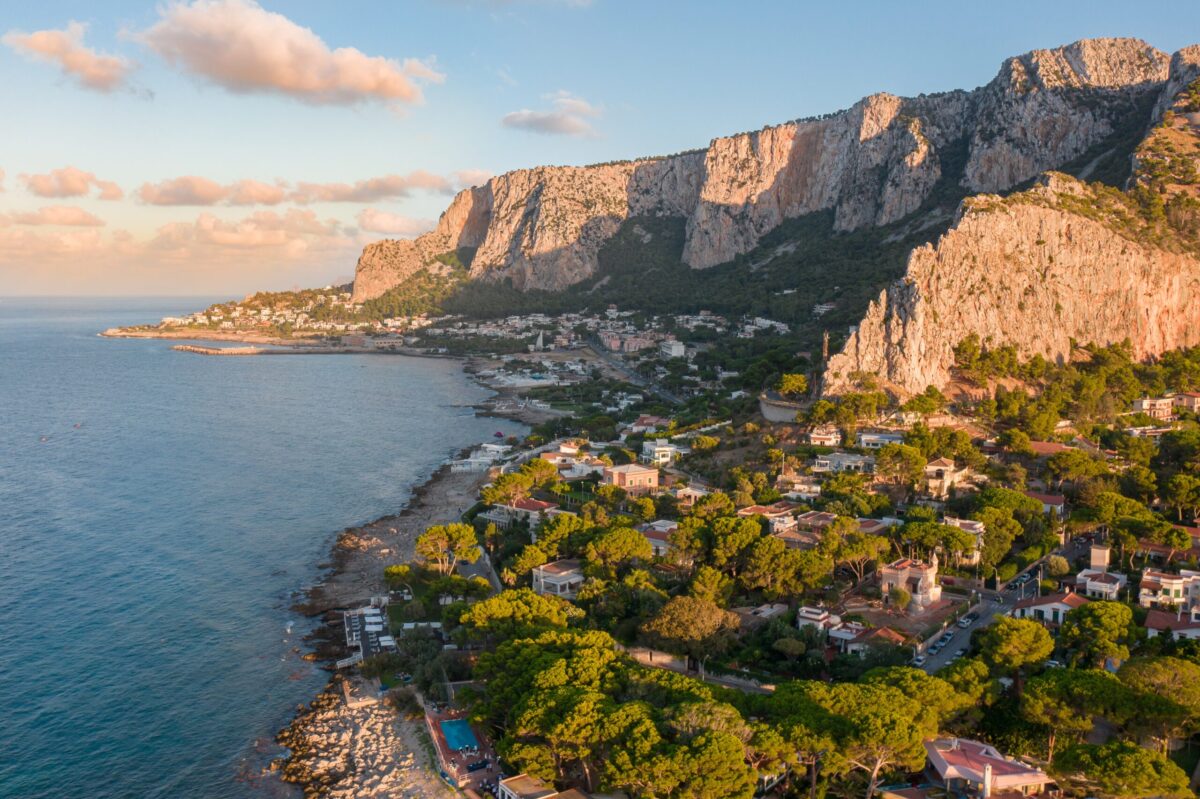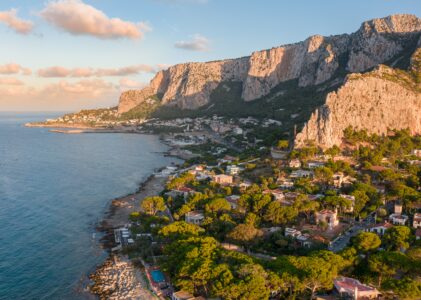Sagrada Familia, the stunning Basilica and UNESCO World Heritage Site in the heart of Barcelona, Spain, is a must-visit destination for travellers from all around the world. Designed by the famous architect Antoni Gaudí, the church is a masterpiece of modernist architecture and an iconic symbol of the city. Here are the top 10 reasons why you should visit Sagrada Familia on your next trip to Barcelona.
The History
Sagrada Familia is one of the most fascinating and unique architectural projects in history. The church’s construction began in 1882, and since then, it has gone through several phases of construction under various architects, with Antoni Gaudí being the most famous of them. However, Gaudí died before completing the project, and since then, the church’s construction has been funded through private donations and ticket sales. The ongoing construction makes Sagrada Familia an intriguing site to visit, as visitors can witness the progress of the church’s construction and see the different styles and techniques used over the years.
The Architecture
The church’s exterior is breathtaking, with its towering spires and intricate facades.Its exterior is breathtaking, with its towering spires and intricate facades. The church’s interior is equally stunning, with its soaring columns, stained glass windows, and beautiful vaulted ceilings. Gaudí’s design was inspired by nature, and this is evident in the organic shapes and forms used throughout the building.
The Gaudi Museum
Visitors can also visit the Gaudi Museum, located inside the church. The museum is dedicated to Antoni Gaudí’s life and work, and visitors can learn about the architect’s creative process and see original drawings and models of the building. The museum also includes exhibits on the construction of the church and the ongoing work being done today.
The Views
Sagrada Familia’s towers offer visitors breathtaking panoramic views of the city of Barcelona, including the Mediterranean Sea and the surrounding mountains. The church’s stained glass windows are designed to flood the interior with natural light, creating a unique and magical atmosphere inside the church. The interior of the church is also adorned with intricate sculptures and carvings, representing religious themes and historical events.
The Light: The church’s stained glass windows are designed to flood the interior with natural light, creating a unique and magical atmosphere inside the church.
The Sculptures
The exterior of the church is adorned with intricate sculptures and carvings, which represent religious themes and historical events.
The Sound
The Sagrada Familia organ is one of the largest in the world, and its acoustics are renowned. It is often used for concerts and performances.
The Peace
Despite its popularity, Sagrada Familia remains a peaceful and contemplative space. Visitors can take a moment to reflect and find peace amidst the hustle and bustle of the city. The church is also a symbol of the Catholic faith, and many visitors come to the church to experience a spiritual connection.
The Faith
Sagrada Familia is a symbol of the Catholic faith, and many visitors come to the church to experience a spiritual connection.
The Legacy
Visiting Sagrada Familia is an opportunity to witness an architectural legacy in the making. When completed, Sagrada Familia will be one of the most significant architectural achievements in history. A visit to the church now is a chance to witness this legacy and see the progress of the construction.
In conclusion, a visit to Sagrada Familia is a unique and unforgettable experience that should not be missed. Its history, architecture, views, and atmosphere make it a must-see destination for anyone visiting Barcelona. So, make sure to add it to your itinerary and experience the wonder and beauty of this iconic site.
History of Sagrada Familia
Sagrada Familia’s history is a fascinating tale of perseverance, tragedy, and enduring artistic vision. It all began in 1866 when a group of devout Catholics formed the Association of Devotees of Saint Joseph. They set out to build a grand church in honour of Saint Joseph, the patron saint of workers, and Barcelona’s guardian saint.
In 1882, architect Francisco de Paula del Villar was hired to design the church, but he resigned a year later due to disagreements with the association’s leaders. Antoni Gaudí, a young and relatively unknown architect at the time, was then commissioned to take over the project. Gaudí’s unique artistic vision and his strong Catholic faith made him the perfect choice to design the church.
Gaudí worked on the Sagrada Familia for over 40 years until his death in 1926. During his time, he oversaw the construction of the Nativity Facade, the Crypt, the Apse, and the Glory Facade, as well as other parts of the church’s structure. He was deeply committed to the project, and he lived a frugal life, investing most of his earnings into the church’s construction.
Unfortunately, Gaudí died before completing the Sagrada Familia, and the project was subsequently put on hold due to the Spanish Civil War and lack of funding. In 1952, a group of architects took up the project, following Gaudí’s plans and ideas as closely as possible, but progress was slow.
In the 1980s, new funding sources were secured, and construction resumed with renewed vigour. The construction of the Passion Facade, the Glory Facade, and the central nave were completed, and the Sagrada Familia began to take shape.
Today, the church is still under construction, with an estimated completion date of 2026, on the 100th anniversary of Gaudí’s death. Over the years, the Sagrada Familia has become one of the most popular tourist attractions in Barcelona, drawing millions of visitors from around the world each year.
The church’s ongoing construction has become a symbol of the city’s enduring artistic vision, and it is a testament to the dedication of the people involved in the project. It is a tribute to the persistence of the human spirit, and it is an architectural masterpiece that will stand as a legacy for generations to come.
How to get to Sagrada Familia
Sagrada Familia is located in the heart of Barcelona, Spain, and is easily accessible by public transportation or by car.
If you are using public transportation, the easiest way to get to Sagrada Familia is by metro. You can take Line 2 or Line 5 of the metro and get off at the Sagrada Familia station. Both lines run through the city centre, making it easy to get to the church from anywhere in the city.
If you prefer to use the bus, several bus lines also run near the Sagrada Familia, including lines 19, 33, 34, 43, 44, 50, 51, B20, and B24. Check with the local public transportation provider, TMB (Transports Metropolitans de Barcelona), for the most updated schedules and routes.
If you are driving, note that parking can be difficult to find in the area. There are several public parking garages in the vicinity, but they can be quite expensive. It’s advisable to use public transportation instead of driving, as it’s more convenient and affordable.
Once you arrive at Sagrada Familia, you will be greeted by the stunning church and its surrounding park. You can purchase tickets online in advance, which is highly recommended to avoid long queues. Guided tours are also available, which provide a more in-depth look at the history and architecture of the church.
Overall, getting to Sagrada Familia is easy, and the church’s central location makes it a convenient and accessible destination for anyone visiting Barcelona.
Who was Gaudi?
Antoni Gaudí (1852-1926) was a renowned Spanish architect, best known for his unique and groundbreaking works that have become symbols of Catalan modernism. Gaudí’s works are famous for their organic forms, the use of natural materials, and their integration of architecture and nature.
Gaudí was born in Reus, Catalonia, and studied architecture in Barcelona. He graduated in 1878 and started working on several projects in the city. In 1883, he was hired to continue the construction of the Sagrada Familia, a church in Barcelona that had been designed by Francisco de Paula del Villar.
Gaudí’s artistic vision transformed the Sagrada Familia into a unique masterpiece, known for its soaring towers, intricate facades, and innovative use of light and space. The church became Gaudí’s life work, and he devoted the rest of his career to it, living frugally and investing most of his earnings into the project.
Gaudí’s other famous works include Park Güell, a public park in Barcelona known for its colorful mosaics and undulating forms; Casa Batlló, a residential building that showcases Gaudí’s love for organic shapes and natural materials; and Casa Milà, a building that exemplifies Gaudí’s use of light, space, and texture.
Gaudí was a deeply religious man, and his faith played a significant role in his work. He believed that architecture should reflect the beauty and harmony of God’s creation, and he saw his work as a way to serve God and humanity. Gaudí’s works continue to inspire architects, artists, and designers around the world, and they are a testament to his creative vision and his enduring legacy.

